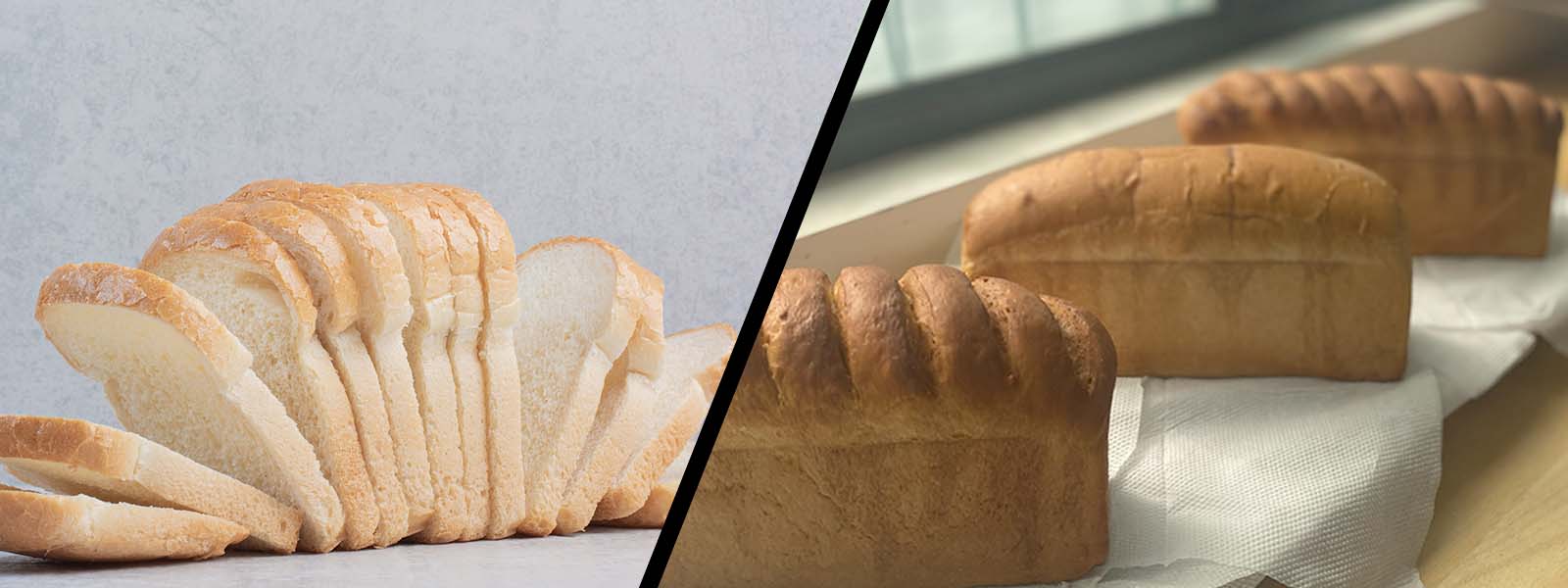

Whether you’re a student rushing through breakfast, a working professional looking for a quick snack, or simply someone who relishes the comfort of a perfectly toasted slice, bread remains a fundamental part of life. In Indian homes and across the globe, bread appears in school tiffins, on dining tables, at cafes, and even in restaurant baskets. Yet, as nutritional knowledge advances and we increasingly focus on what’s fueling our bodies, the age-old debate has become more relevant than ever: White Bread vs Brown Bread. With confusion fueled by marketing claims and supermarket shelves crammed with choices, which loaf is truly better for your health?
Let’s slice through the facts and discover what bread truly delivers when it comes to your well-being.
Pro Tip: Still confused between white and brown bread? Join a culinary arts course to understand how ingredients impact health and flavour from the ground up.
Bread is more than just a side dish. It’s a symbol of civilization’s progress, present since the dawn of agriculture. Whether it was Ancient Egypt’s flatbreads, Rome’s rustic loaves, or the universal soft white bread popularized in the last century, bread has always filled stomachs and hearts alike.
But modern food technologies have changed how bread is made and what nutritional value it carries. We now have a dizzying array of choices: brown bread vs white bread, multigrain, whole wheat brown bread, and even gluten-free and health-labeled options. Some are designed for pure pleasure, others for health-conscious eaters.
The resulting confusion is understandable. With rising rates of obesity, diabetes, and heart disease—even among younger people—your sandwich truly holds more power than you think. Recognizing that bread contains both joy and potential health impacts, it’s important to know how to make the best choice for your snack, meal, and lifestyle.
White bread is perhaps the most recognizable, widely consumed type of bread. But what goes into making it, and what sets it apart?
The core of white bread is refined wheat flour, often known as maida in India. This flour is highly processed. Manufacturers remove the nutrient-rich outer layers—the bran and germ—leaving only the endosperm. The result is a fine, pale flour.
White bread’s soft, airy crumb and mild flavor make it loved by all ages. It pairs with everything from sweet spreads to savory toppings. Its shelf life is longer than that of most rustic or fiber-rich breads, which makes it practical for busy routines.
From lunchbox sandwiches to crunchy toasts, bread pakoras to French toast, white bread forms the backbone of countless recipes—even desserts like bread pudding rely on its softness.
However, beneath this fluffy convenience, there are important questions about its place in a balanced diet.
Brown bread is often marketed as the healthier sibling to white bread, and for good reason. But what exactly is brown bread? Is all brown bread equal, or could there be a catch?
Thanks to its superior nutrient profile, brown bread nutrition enjoys a healthy reputation. But, as we'll see, not all brown breads fulfill this promise equally!
What truly sets brown bread vs white bread apart? Let’s compare, nutrient by nutrient:
| Nutrient | White Bread | Brown Bread |
|---|---|---|
| Fiber | Low—bran is stripped away | High—intact bran boosts roughage |
| B Vitamins | Many lost in refining; some may be added back | Mostly retained naturally from the whole grain |
| Glycemic Index | High (55–85)—leads to quick blood sugar spikes | Moderate (40–60), slower sugar release |
| Protein | Moderate (2–3g per slice) | Moderate to high (2.5–4g per slice) |
| Minerals | Lower (iron, magnesium, zinc less bioavailable) | Higher—retains natural minerals |
| Calories | ~70–80 per slice | Similar, but more filling & nutritious per calorie |
| Additives | More likely to include preservatives, sugar, color | Less processed—fewer unnecessary additives |
Pro Tip: Enrol in cooking classes in Delhi to learn how to make healthier sandwiches using brown bread, whole grains, and high-protein fillings.
Why do nutritionists, athletes, and weight watchers favor whole-grain bread? Here’s a closer look:
b) Helps With Weight Management
c) Stabilizes Blood Sugar
d) Boosts Heart Health
e) Richer in Natural Nutrients
White bread, for all its comfort and convenience, does have nutritional drawbacks. Let’s be honest about its limitations:
White bread isn’t inherently “bad” if enjoyed in moderation and balanced by other whole foods. However, habitual heavy intake can worsen modern lifestyle diseases.
Not all that glitters is gold, and not all brown bread is genuinely nutritious. Here’s where you must become a bread detective!
Some brands make brown bread by simply adding caramel, molasses, or even brown food coloring to refined flour. This makes loaves look earthy and whole-grain, without any nutritional improvement.
Always read the package. True whole wheat brown bread will have “Whole Wheat Flour” as the first ingredient. Look for:
If the main ingredient is “enriched wheat flour” or “maida”, skip it. A long ingredient list with mystery items? Not a good sign.
“Multigrain” simply means more than one grain is used, but often just as refined flour with little bits of other grains—unless specified as “whole grain”.
While brown bread is generally nutritionally superior, white bread isn’t always “off the table.” Special circumstances include:
Moderation, context, and smart pairing can make white bread an occasional, rather than everyday, choice.
Not all breads—brown or white—are created equal. Use this checklist next time you shop:
Viewing Labels: An Example
Good:
Whole Wheat Flour, Water, Yeast, Salt, Sunflower Seeds, Flaxseed
Not So Good:
Refined Wheat Flour (Maida), Water, Sugar, Vegetable Oil, Salt, Emulsifiers, Preservatives, Caramel Color
Most nutritionists and dietitians advocate for whole grains. Dr. Priya Saxena, a registered Indian dietitian, says,
“When we compare White Bread vs Brown Bread, the latter—if truly whole grain—delivers better digestive health, steadier energy, and more vitamins. But even the healthiest bread should be eaten in moderation.”
Nutritionists further advise that those with weight loss goals, heart conditions, or diabetes benefit tremendously from sticking with brown or whole grain options. For children, fiber is crucial for gut health, but bread should never replace fruits and vegetables as a fiber source.
Pro Tip from Tedco Education’s Culinary Team:
“Look out for colored breads in bakeries masquerading as brown bread. Always ask or check for freshly ground whole wheat flour as the base ingredient!”
So, after peeling back the marketing, slicing through the nutrition data, and considering your health goals—where does that leave you?
Brown bread emerged as the winner for most people, most of the time—provided it’s truly 100% whole grain. You get more fibers, superior nutrition, and long-lasting fullness for every calorie. This supports better digestion, energy, heart health, and even helps with weight loss.
But beware: Color isn’t always an indicator of nutrition. Always look at what’s inside—not just on the outside.
Healthy choices start with awareness. Mindfully choosing bread—that beloved staple—sets the tone for smart snacking, balanced meals, and lifelong wellness.
So, what’s your preference—brown bread or white? Why? Let us know in the comments and inspire others to make bread-wise choices!
Not all brown breads are truly healthy. Always check for 100% whole grain or whole wheat flour as the main ingredient. Many "brown" breads are colored with caramel or molasses, not made with whole grains.
White bread’s high GI can “spike” blood sugar faster than brown bread. Occasional, small servings are possible, especially if combined with fiber, protein, or healthy fats, but overall, whole grain options are better for diabetes management.
Multigrain bread vs brown bread—multigrain only means more than one grain is used. It could still be mostly refined flour, so always look for “100% whole grain.” Nutrient-wise, real brown bread often wins.
Yes—whole wheat brown bread is full of fiber, which keeps you full longer, helping control calorie intake.
Absolutely. Many brands now make gluten-free brown breads from grains like millet, sorghum, rice, or nut flour, often blended with fiber and seeds for texture and nutrition.
Want full control over your bread’s quality? Try this easy, fool-proof atta bread recipe at home:
Homemade Whole Wheat Bread (Atta Bread) Recipe
Ingredients:
Instructions:
In a large bowl, dissolve yeast and honey in warm water. Set aside for 5–10 minutes until frothy.
Add flour, oil, and salt. Knead into a soft, elastic dough for about 8–10 minutes.
Cover with a damp towel and let it rise until doubled (about 1 hour).
Punch down dough, shape into a loaf, and place in a greased pan.
Let it rise again (about 30–40 minutes).
Bake at 180°C for 30–35 minutes or until the top is golden brown.
Cool before slicing. Enjoy pure, whole wheat brown bread—fiber and flavor guaranteed!
This comprehensive guide is crafted for Tedco Education, helping you nurture smarter eating habits one slice at a time. With the right choices, bread can be a delicious, nutritious, and sustainable part of your daily menu. Eat smart, eat well, and empower yourself with food knowledge!

Bakery & Pastry Instructor
Click one of our representatives below to chat on WhatsApp or send us an email to
info@tedcoeducation.com
Counselor
Bakery and Pastry Courses
Counselor
Culinary Arts Courses
Click one of our representatives below to chat on WhatsApp or send us an email to
info@tedcoeducation.com
Counselor
Bakery and Pastry Courses
Counselor
Culinary Arts Courses